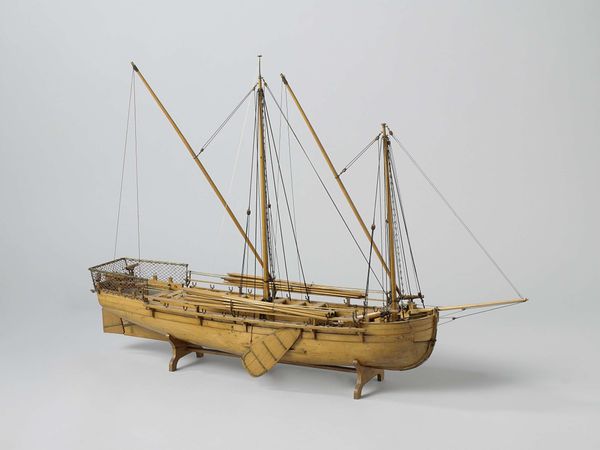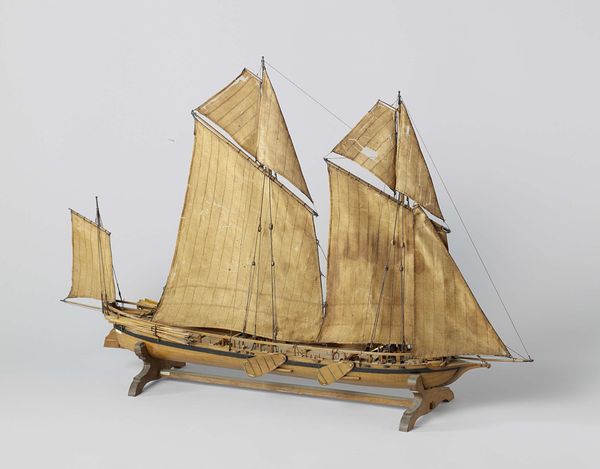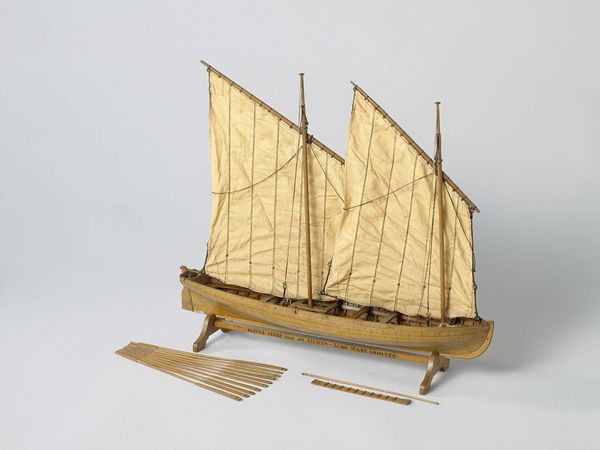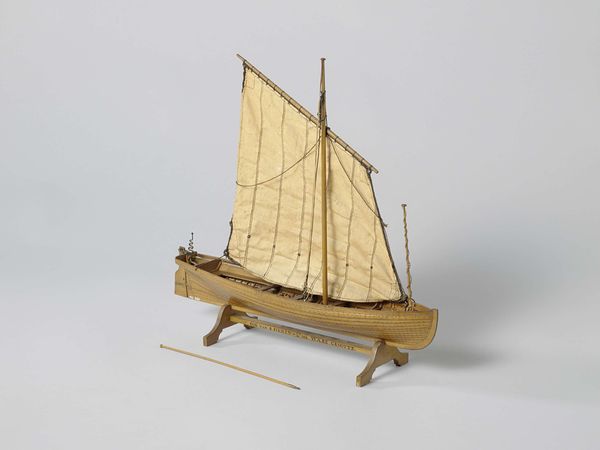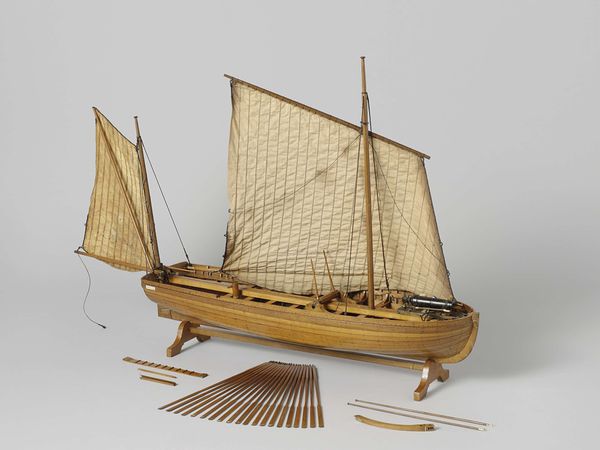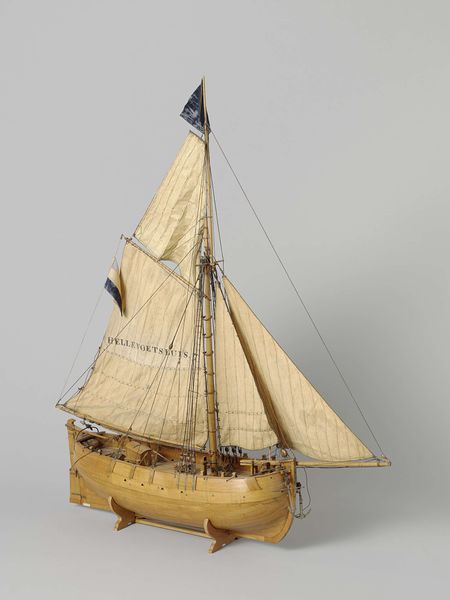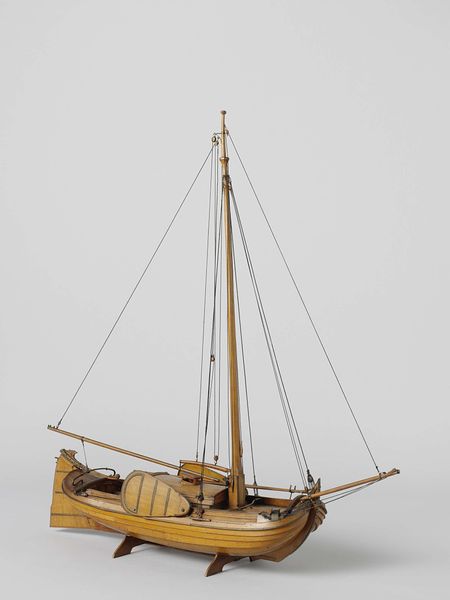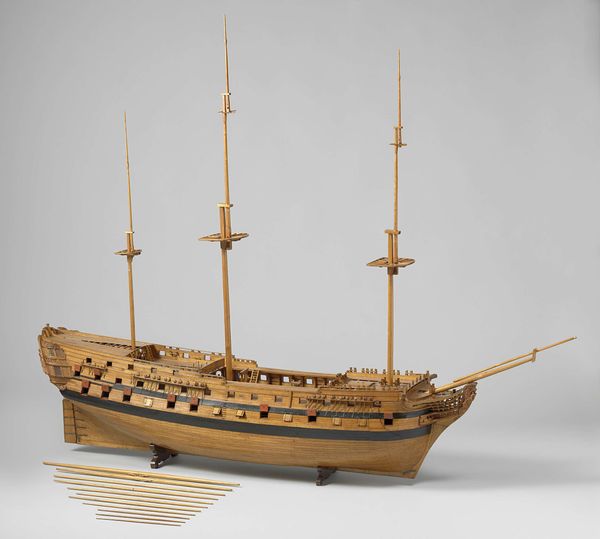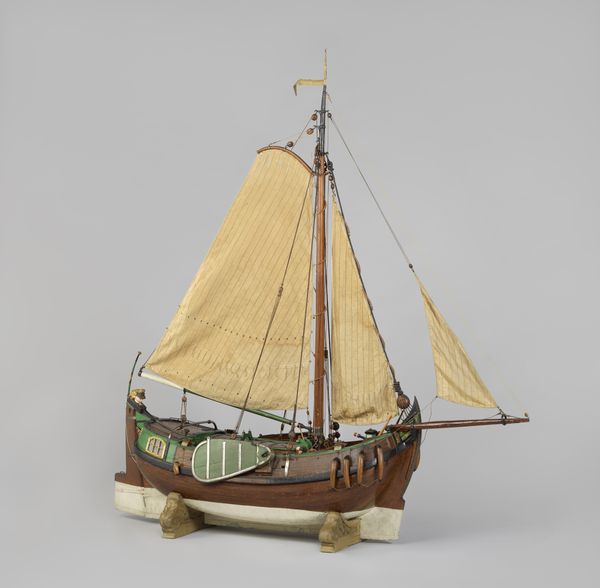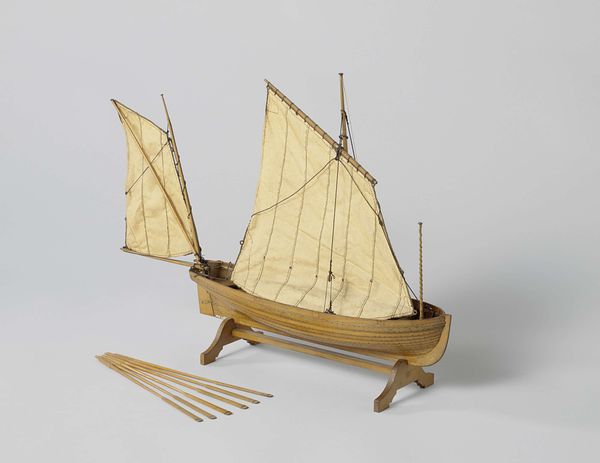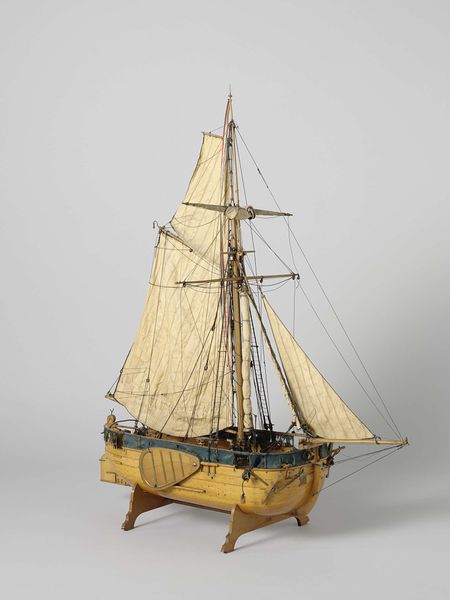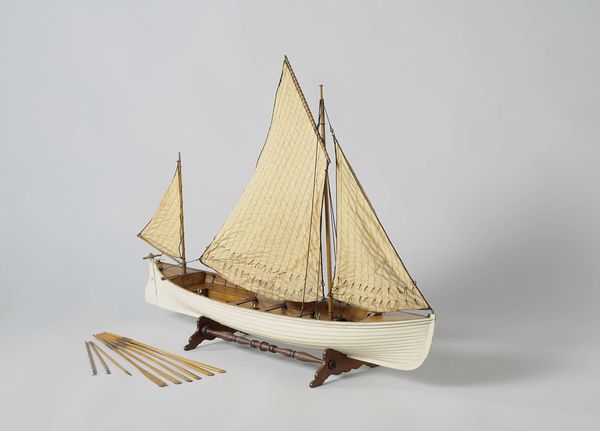
sculpture, wood
#
sculpture
#
sculpture
#
wood
Dimensions: height 99.5 cm, length 186 cm, width 42 cm
Copyright: Rijks Museum: Open Domain
Curator: Here we have an exquisite model of a galley, estimated to have been crafted sometime between 1700 and 1750. The Rijksmuseum attributes this work to an anonymous artist, meticulously realized in wood. Editor: It's captivating. The sheer intricacy suggests endless patience. But also, it strikes me as melancholic, like a dream of past grandeur meticulously constructed and carefully preserved. Curator: The formal composition emphasizes a bilateral symmetry characteristic of naval architecture of the era. The arrangement of oars on either side leads the eye horizontally, balanced by the verticality of the mast. Semiotically, the model speaks to the symbolic order of maritime power. Editor: Power certainly, but let's consider the means of achieving that aesthetic. What about the people whose labor materialized it? Building actual galleys relied heavily on enslaved oarsmen—a brutal reality largely absent from this pristine rendering. What kind of tools, workshop conditions, and level of skill did the model's creator need? Curator: That's a pertinent challenge to my strictly visual reading. Materially, wood provides an intriguing parallel, doesn't it? At the structural level, it is about function, precision; however, the choice to represent naval vessels in wood is also tied to tradition, and aesthetics. It provides for the possibility of adornment, intricate carving... Editor: Indeed. Look closely. I suspect different kinds of wood might have been used – a lighter, easily carved type for decorative purposes versus a more rigid kind for the spine. Examining the joins could reveal the construction process, clues about the specific artisan skills involved, even regional styles influencing shipbuilding traditions. Curator: I am struck by the play of light across its surfaces and textures, from the smoothness of the hull to the rougher surfaces where carving adds decorative flourish. These textural juxtapositions draw me back to the formal relationships in the object. Editor: Well, seeing it this way encourages a shift in focus: not just a naval vessel, but a detailed study of material processes that hint at a rich context—the maritime networks that transported wood, the global conditions for enslaved laborers and highly-skilled model makers all converging here. Curator: I find my view widened by our discussion of the model's physicality and broader socio-economic connections. I leave with a renewed appreciation for both its symbolic potency and grounded origins. Editor: Exactly! The story of making and materials always enriches art, encouraging us to look beyond aesthetics to consider the networks of labor, and production necessary for creating objects, even at miniature scale.
Comments
rijksmuseum about 2 years ago
⋮
The galley originated in the Mediterranean region. It is a manoeuvrable, oar-powered vessel of shallow draught that is not particularly suited to deep water. Galleys were deployed in Dutch waters during the Eighty Years’ War and were also used by the Swedish and Russian navies in the Baltic. This model was reputedly made for Tsar Peter the Great, but has actually been confused with the frigate Galei, built for the Russian ruler in 1721.
Join the conversation
Join millions of artists and users on Artera today and experience the ultimate creative platform.
